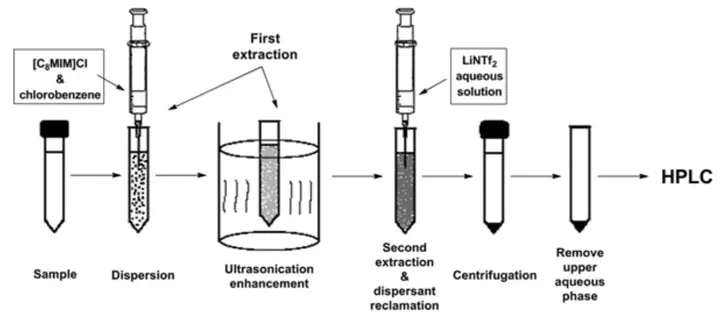Sequential dispersive liquid–liquid microextraction for the determination of aryloxyphenoxy‐propionate herbicides in water

Abstract
A novel dispersive liquid–liquid microextraction (DLLME) method followed by HPLC analysis, termed sequential DLLME, was developed for the preconcentration and determination of aryloxyphenoxy-propionate herbicides (i.e. haloxyfop-R-methyl, cyhalofop-butyl, fenoxaprop-P-ethyl, and fluazifop-P-butyl) in aqueous samples. The method is based on the combination of ultrasound-assisted DLLME with in situ ionic liquid (IL) DLLME into one extraction procedure and achieved better performance than widely used DLLME procedures. Chlorobenzene was used as the extraction solvent during the first extraction. Hydrophilic IL 1-octyl-3-methylimidazolium chloride was used as a dispersive solvent during the first extraction and as an extraction solvent during the second extraction after an in situ chloride exchange by bis[(trifluoromethane)sulfonyl]imide. Several experimental parameters affecting the extraction efficiency were studied and optimized with the design of experiments using MINITAB® 16 software. Under the optimized conditions, the extractions resulted in analyte recoveries of 78–91%. The correlation coefficients of the calibration curves ranged from 0.9994 to 0.9997 at concentrations of 10–300, 15–300, and 20–300 μg L−1. The relative SDs (n = 5) ranged from 2.9 to 5.4%. The LODs for the four herbicides were between 1.50 and 6.12 μg L−1.